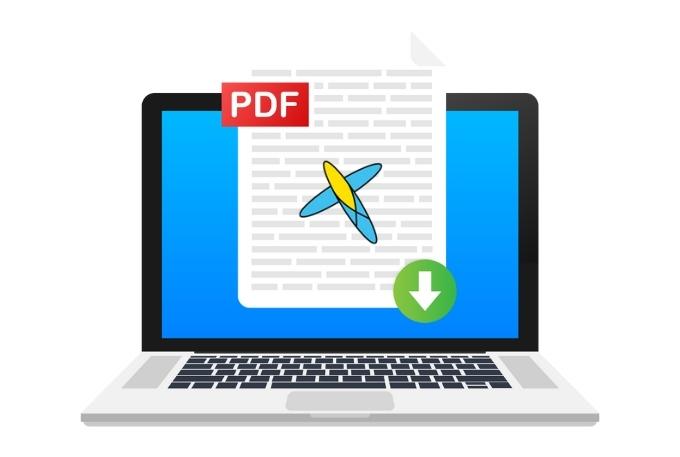How to overcome organizational impediments
Understanding the different types of barriers existing within an organization is crucial to overcoming organizational impediments. It will allow you to develop a strategy to overcome any employee resistance to the corporate change process that may occur within the organization. Once the design is in place, it is crucial to implement it and evaluate the results. One should know how to make necessary adjustments to achieve the desired outcome. Whatever approach you take, it’s important to be relentless in your efforts as a change catalyst against the status quo.
You have been working as a change agent (Scrum Master, Agile Coach, Enterprise Coach, Leader, or fill your role here) at your company for a few years now, and you’ve seen how things have been done for as long as you can remember. You know that some organizational impediments prevent organizational change, but you’re not sure what they are or how to overcome them. You also don’t know whom to turn to for help. It can be challenging to create a change initiative within an organization, especially if you don’t know where to start. This article will discuss the different types of organizational impediments to change and how to overcome them. We’ll also provide tips on how to be a successful change catalyst within an organization. So, if you’re ready to make some changes, keep reading.
To successfully overcome organizational impediments, you must learn how to identify the suitable approaches and takeaways for your situation. It would be best if you also learned how to communicate effectively with leaders about the change management process. It involves developing a strategy for overcoming resistance to organizational change and implementing it successfully.
You can do several things to develop a successful strategy for overcoming resistance to change initiatives. One of the most important things is understanding how to overcome organizational barriers. It will allow you to develop a tailored approach that will be more likely to succeed.
You also need to identify the sources of resistance to change. It will help you target your efforts and ensure that you’re addressing the biggest obstacles head-on. It’s also essential to build a coalition of supporters who will help you implement planned change initiatives and evaluate them retrospectively.
Finally, it would be best if you are prepared for setbacks and willing to make necessary adjustments along the way. The key is to be relentless in your efforts and never give up on your goal of making organizational changes.
Understand the types of organizational impediments
The first step in overcoming organizational impediments to change is gaining an in-depth understanding of the most common barriers. Several different types of barriers may exist within an organization, and it’s essential to be aware of them. Some of the most common types of organizational impediments include:
Structural Barriers:
These are barriers created by the organizational structure, policies, and procedures. They can create silos and make it difficult or impossible to managing change within the organization.
Behavioral Barriers:
These common barriers are created by the way people behave within the organization. They can include resistance to the change process, groupthink, and risk aversion.
Political Barriers:
The politics of the organization create these barriers. They can include things like power struggles, favoritism, and turf wars.
Organizational Culture:
A company’s culture can cause barriers to organizational change, including norms, values, and beliefs.
Technological Barriers:
These barriers to organizational change are created by technology. They can include proprietary software or systems that are difficult to change or upgrade.
Environmental Barriers:
The external environment can also cause barriers to organizational change. They can include things like regulations, competition, and economic conditions.
Once you understand the different organizational impediments that may exist within your company, you can begin to develop a strategy for overcoming them. It involves identifying the sources of resistance to change initiatives and building a coalition of supporters who will help you implement and evaluate your changes successfully.
Identify the sources of resistance to organizational change.
The sources of resistance to organizational change are necessary to identify because they can be the biggest obstacles to achieving your goal of implementing change initiatives within the organization. There are several different sources of resistance, and each one can be a challenge to overcome.
Some of the most common sources of resistance to the strategic change process include:
Reluctant to Change:
It is one of the most common sources of resistance, and it can be challenging to overcome. People may resist changing how they do things, even if it’s for the sake of the organization.
Groupthink:
It occurs when people are reluctant to question the decisions or actions of the group. This approach to decision-making progress can lead to stagnation and prevent changes from being made.
Risk Aversion:
It occurs when people are afraid to take risks, even if they could lead to improvements or innovations. It can hinder progress and prevent transformational change.
Power Struggles:
These occur when people attempt to gain control or influence over others to further their agenda. They can create team conflict and prevent change efforts from being made.
Favoritism:
It occurs when people are given preferential treatment based on personal relationships instead of merit. It can lead to unfairness and dissatisfaction among employees.
Turf Wars:
These occur when people try to protect their areas of responsibility or power by preventing others from encroaching on them. They can hinder progress and prevent changes from being made.
Poor Change Management:
It is building a coalition of supporters to overcome the resistance to change. It is frequently cited as one of the main reasons for organizational change resistance. Poor change management can lead to confusion, frustration, and a lack of understanding among employees. It can make it difficult to implement successful change initiatives successfully.
Develop a strategy to overcome resistance to change
Once you understand the sources of resistance to change, you can develop a strategy to overcome barriers. It involves identifying the strategies that will most effectively overcome each type of resistance.
Some of the most common strategies for overcoming resistance to change:
Persuasion:
This strategy involves convincing people that the changes are necessary and will benefit the organization. It can be effective in overcoming reluctance to organizational change and groupthink.
Incentives:
This strategy involves offering incentives to employees for accepting and implementing the changes. It can effectively overcome reluctance to a change process, risk aversion, and power struggles.
Education:
This strategy involves educating employees about the necessary changes and how they will benefit the organization. It can effectively overcome groupthink, risk aversion, and power struggles.
Communication:
Lack of communication can be detrimental to any change initiative. This involves creating an effective communication strategy that regularly communicates with employees about the change’s progress and solicits feedback. As well as being in the frontline and collaborating with them to ensure that the changes are made in a way that is most beneficial to them and the organization. Making the timelines visible This can be an effective way to overcome resistance to change, especially in cases where employees feel that they have a say in the process.
Collaboration:
This strategy involves working with different levels of the organization’s employees to develop and implement the changes. It consists in soliciting their input and feedback and collaborating with them to ensure that the changes are made in a way that is most beneficial to the organization. This can be an effective way to overcome resistance to change, especially in cases where employees feel that they have a say in the process.

Using ADKAR Change Model as a tool to implement change
ADKAR can help you overcome these obstacles and ensure your change management initiative is successful. ADKAR is a five-step change management framework that Prosci developed. It stands for Awareness, Desire, Knowledge, Ability, and Reinforcement and outlines the steps to implement change projects successfully. Let’s take a closer look at each stage.
Awareness:
This step involves raising awareness about the need for change and getting people to buy into the idea of change management. It’s essential to communicate the reasons for the transition to senior management and mid-level managers about how it will benefit the organization.
Desire:
This step involves motivating people to want to make changes. It would be best if you showed them how the changes would improve their lives or the lives of others within the organization.
Knowledge:
This step involves enabling employee productivity by providing information about the changes so that they understand what is required. Employees need to know what to expect of them and how they can complete the tasks associated with the change.
Ability:
This step involves helping employees develop the skills and knowledge necessary to implement the changes successfully. Identify the training and development programs to support employees learn new skills.
Reinforcement:
This step involves ensuring employees have the support they need to sustain the changes over time. It may include providing feedback, coaching, and rewards for successful change implementation.
By following the steps of the ADKAR model, you can overcome barriers to change management and successfully implement new processes in your organization.
Implement the strategy and overcome resistance
Once the strategy is in place, it is crucial to implement it and evaluate the results. Change agents need buy-in from top management to make necessary adjustments to achieve the desired outcome. Whatever approach you take, it’s important to be relentless in your efforts as a change catalyst against the status quo.
The best way to ensure the strategy is successful is to get buy-in from as many people as possible. One can be done by regularly communicating with employees about the changes progress and soliciting their feedback. It’s also essential to provide incentives for accepting and implementing the changes.
If you can overcome the sources of resistance to change and successfully implement your change management strategy, the organization will be much more likely to achieve its goals.
Evaluate results and make necessary adjustments
Evaluating the results of a change initiative is essential for determining whether the changes have been successful. It will involve assessing the changes’ impact on employees, customers, and all the stakeholders’ buy-in. It also includes assessing the financial and operational effects of the changes.
If the evaluation results indicate that the changes have not been successful, it may be necessary to adjust your strategy. It could involve modifying or abandoning the changes altogether. It’s essential to be flexible and willing to make adjustments as needed to achieve success.
Conclusion
No matter how well you plan for or communicate your change management strategy, there will be some adversity. It happens when emotions become involved. People can sometimes react and push back when workplace changes occur.
The key to successful change management is anticipation:
You can consider System Thinking and taking the entire organization in perspective, wearing different hats, using bespoke coaching models to address the change, and putting appropriate strategies and processes in place before introducing the change. Even seasoned executives struggle to get buy-in when that change is complex in scope, long-term, or encounters strong resistance. If you are new to leadership or not, consider engaging a change management consultant at Leadership Tribe to help you. By ensuring that the anticipated return on investment (ROI) for the change is triumphant, that investment could yield enormous rewards for your company.



